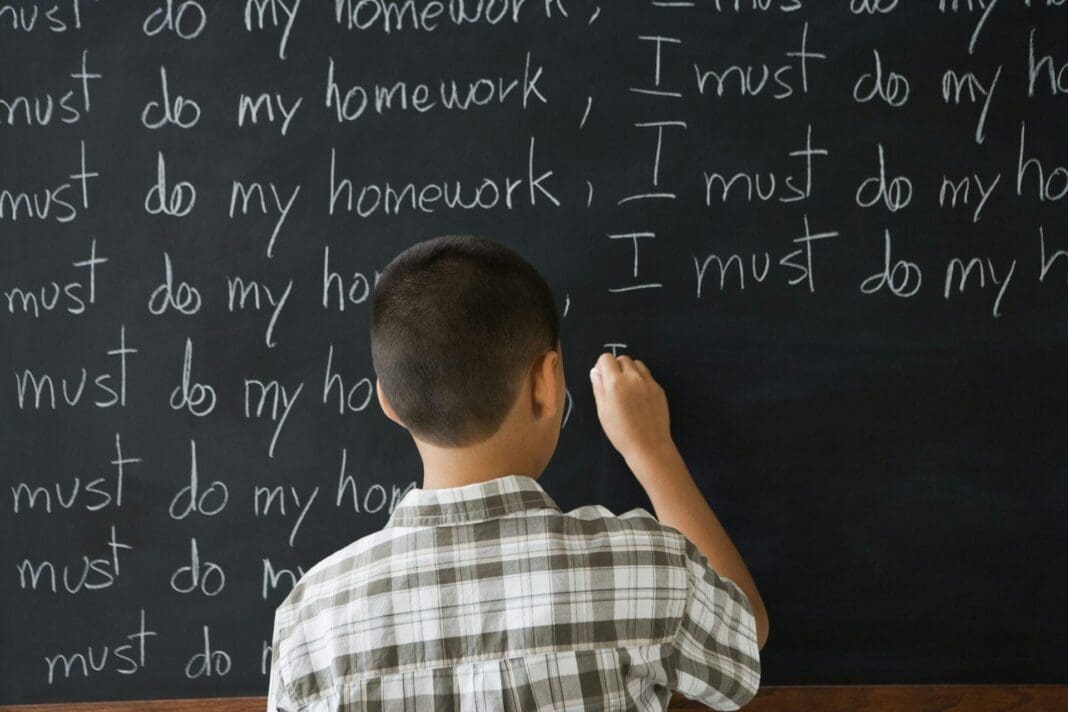The Trump administration is trying to reshape how schools discipline students – and alter the federal government’s role in the process.
On April 23, 2025, President Donald Trump issued an executive order suggesting schools have been using racially discriminatory discipline policies. It sets in motion new federal guidance that would reverse policies supported by the Obama and Biden administrations aimed at reducing racial disparities in how Black children and other students of color are disciplined in school.
I believe the order could have far-reaching consequences and is likely to prompt pushback and legal challenges. As a researcher who studies school discipline, I can explain why this is happening and what it means for schools and students.
School discipline has historically been locally controlled, though federal law does mandate a few disciplinary responses, such as expulsion for possessing firearms. School boards create codes of conduct. School principals and teachers make and enforce rules.
However, federal guidance over the past decade has increasingly shaped these local decisions.
In 2014, for example, the U.S. departments of Education and Justice issued guidance to reduce racial disparities in school discipline. This Obama-era letter suggested that higher rates of discipline for racial minorities could be evidence of discrimination. The guidance signaled how the U.S. Department of Education would interpret federal law and what might be cause for federal investigation.
In the following years, schools reduced suspensions and adopted alternatives such as restorative practices, which focus on talking through and repairing harm instead of removing students from the classroom. But some people saw this as a weakening of school discipline. Politicians and policy advocates even claimed that these changes in discipline contributed to school shootings.
Even though the guidance was rescinded during the first Trump administration, the federal government continued to investigate disparities in discipline. And without alternative guidance, many schools continued practices guided by the Obama-era policies.
These efforts to reduce disparities in school discipline continued under President Joe Biden, though without reinstating the Obama-era guidance.
In the return to schooling after COVID-19 shutdowns, however, schools grappled with reports of increasing student misbehavior. Nationally, almost 9 in 10 principals reported negative effects of the pandemic on student behavior.
At the same time, there were reports that some schools were not properly documenting serious misbehavior – hiding high or disparate rates of discipline. These problems created an opportunity for the Trump administration to push new federal guidance.
Trump’s new executive order sets the stage for further federal influence over discipline policy and practices. Here’s a breakdown of what it contains.
First, the executive order states that schools should no longer focus on differences in rates of discipline across subgroups. It contends that doing so has led to schools failing to report incidents and making decisions based on students’ race rather than objective facts.
Next, the executive order calls on the secretary of education to develop new school discipline guidance for states and schools. It also calls for the secretary of education and attorney general to work with state leaders to reshape how their states can prevent racial discrimination in discipline.
Finally, the executive order requires a report on “the status of discriminatory-equity-ideology-based” school discipline. The order does not explicitly say what such discipline is, but it presumably includes alternatives to suspension and approaches that focus on considering race in disciplinary decisions.
The report is to provide model policies that the order claims will uphold “American values and traditional virtues” and provide examples of discipline not based on “equity ideology.”
Part of the report will also include an evaluation of past federal civil rights investigations and federal funding supporting organizations that promote discipline approaches deemed problematic under the new order. This addresses concerns that the threat of federal investigation over discipline disparities was used to influence schools’ discipline policies.
In short, the order suggests expanded federal involvement in school discipline. It does so despite noting that it is an “obvious conclusion” that “disciplinary decisions are best left in the hands of classroom teachers and administrators.”
The executive order claims to provide “protections against racial discrimination” in school discipline. Interestingly, the policies Trump is seeking to undo were similarly intended to reduce racial disparities.
This seeming contradiction can be understood when the executive order is viewed against the backdrop of current education policy debates. A wide set of policies grounded in efforts of diversity, equity and inclusion and related topics have been at the forefront of debates over schooling in the past five years. From debates around “critical race theory” – the idea that racism is embedded in our social systems – to the content of school libraries, the “culture wars” are at the schoolhouse door.
It is no coincidence, then, that the executive order uses the term “discriminatory equity ideology” to describe discipline policies it prohibits.
I argue this reframing of DEI from diversity, equity and inclusion to discrimination illustrates that the new executive order is not just about school discipline. It is part of a bigger debate on the value and impacts of DEI and politicized contention over public schooling.
In the short term, I believe educators will face much uncertainty. The executive order is vague. It does not name specific discipline policies that should be avoided or used.
But in the coming months, the executive order promises increased federal influence over school discipline. The full scope or impact of this is not yet clear. However, it is reasonable to expect that, just like other contested issues in education, there will be legal challenges and pushback in some locales.
In short, the “common sense” discipline reforms called for in the executive order are unlikely to be seen as common sense for everyone.
This article is republished from The Conversation, a nonprofit, independent news organization bringing you facts and trustworthy analysis to help you make sense of our complex world. It was written by: F. Chris Curran, University of Florida
Read more: Zero tolerance laws increase suspension rates for black students Educators say student misconduct has increased − but progressive reforms or harsher punishments alone won’t fix the problem Just what are ‘zero tolerance’ policies – and are they still common in America’s schools?
F. Chris Curran has received funding from the National Institute of Justice, the Bureau of Justice Assistance, the American Civil Liberties Union, and the American Educational Research Association for research on school discipline and safety.














